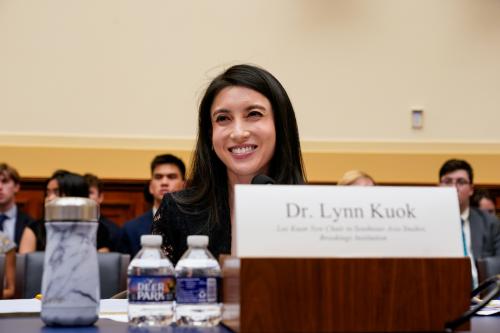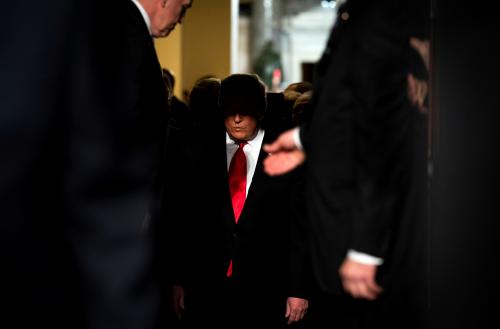The surge in mineral discoveries in Africa provides a vehicle through which countries can transform their economies at a faster pace. The use of commodity-backed securities to raise to fuel growth and create jobs is within reach. It is estimated that Africa is home to 30 percent of known global mineral resources, and, for some commodities (particularly, uranium, platinum, diamonds and gold), Africa’s share is more than 50 percent. These numbers are projected to increase over time. Increasingly, hitherto non-resource rich countries are becoming resource rich. Senegal’s top export commodity in 2012, for example, was gold. Mineral exports as a share of GDP in Senegal doubled over the last decade from 3.1 percent in 2000 to 6.3 percent in 2012. In a few years, Senegal, like many other African countries, is hoping to become part of a much talked about set of countries in the region—the commodity or resource-rich countries. Similarly, coal production in Mozambique’s Tete province is projected to reach 100 million metric tons in a decade, resulting in an additional $2 billion of fiscal revenues by 2020. Iron ore mining in Sierra Leone and Mauritania is expected to boost their GDP growth by over 25 percent by 2020.
This week the international development community will meet in Washington, D.C. for the IMF and World Bank Spring meetings to discuss the future of development financing and the state of the world economy. This event precedes the 10-day trip of President Xi Jinping of China to Africa two weeks ago, during which he signed about 70 cooperation agreements with countries including South Africa, Tanzania and the Republic of the Congo Most of the China-Africa agreements had one thing in common: the exchange of resources for investments in large-scale infrastructure to finance development.
How can African countries use their mineral resources to accelerate overall economic growth? The visit of the Chinese President Xi Jinping to Africa may provide a clear and bold answer. With China, Africa has entered into a system of spot trading its mineral resources for infrastructure. The process is seen to be heavily lopsided by most, as African countries do not always get the most critical infrastructure in return for the sale of their commodities. Many countries enter into these agreements in an attempt to respond to the growing needs of their populations for services, infrastructure and jobs. Unfortunately, in general, these exchanges have not been transformational.
Following the 2008 global financial crisis, it became clear that African countries could no longer rely on development aid to fund the big transformative infrastructure and social projects needed to sustain and accelerate growth.
Following the 2008 global financial crisis, it became clear that African countries could no longer rely on development aid to fund the big transformative infrastructure and social projects needed to sustain and accelerate growth. Africa needs over $75 billion to fund its infrastructure needs. The amounts needed to improve access and quality of education and health care are substantial. There is a growing sense of urgency on the continent as leaders look for solutions and their populations grow impatient. The enthusiasm around the BRICS (Brazil, Russia, India, China and South Africa) Bank, Global Infrastructure Bank and others is a manifestation of this need. Sub-Saharan Africa, with 800 million people, has about 80 gigawatts of energy generation capacity—on average supplied at prohibitive costs for businesses. This is about the same capacity as Spain, with 40 million inhabitants. By 2030, there will be over a billion people demanding energy, with over 50 percent of them residing in cities. The growing middle class will demand better housing and transport. The growing number of youth will demand better education systems and jobs. African governments are aware of this yawning expectations gap and the threat it poses.
The optimism about growth in Africa could quickly turn into despair if governments are not able to provide the basic services needed to fulfill growing expectations. As citizens exhaust their capacity to wait for a chance to participate in this now much-touted growth of the continent, the celebration of Africa as the rising continent could quickly dissipate. The recent turmoil in Mali, Niger and the Central African Republic may be the first warning signs of this impatience. As we have seen in the Arab Spring countries as well, there comes a time when citizens are no longer willing to stand by and wait while the education system fails to deliver, good jobs are only for the elite, and parts of the country are left behind. The new challenge for Africa is how to manage the continents’ vast natural resources so as to accelerate growth that is inclusive and delivers for all.
How Does Africa Sustain Growth?
President Xi Jinping and China’s cooperation agreements offer a solution that is attractive because of its expediency. The international community and the international finance institutions working with the private sector can offer another option to finance infrastructure and other economic development plans—commodity-backed securities (CBS). The resource curse could become a blessing if Africa worked to bring the future forward, if African governments used future prospects to build the present realities in a classical over-lapping generations model where future revenue helps build the present. With Africa’s demographic structure, investments must be made today to benefit from demographic dividend. This approach can help countries fast forward their development by a full generation.
While the world continues to look for ways to fully recover from the financial crisis, there are some lessons we must not totally discard. The development of a U.S. mortgage market helped accelerate growth in the U.S. and today the U.K. is once again trying to use mortgages to spur growth.
While the world continues to look for ways to fully recover from the financial crisis, there are some lessons we must not totally discard. The development of a U.S. mortgage market helped accelerate growth in the U.S. and today the U.K. is once again trying to use mortgages to spur growth. The concept of mortgages and mortgage-backed securities is fundamentally a sound one if the underlying assets are secure, are properly valued and have an appropriate regulatory framework.
How can mineral resource-rich countries in Africa take a page out of the book on the development of new innovative financial instruments to serve infrastructure needs in the Africa? It is time that these countries began seriously considering, in a transparent manner, the use of commodity-backed securities as a new asset class to leverage financing for their development.
Commodity-Backed Securities Should be Considered Now
Concessional resources have dried up and private resources are in search of better returns. With the financial crisis of 2008 and the current eurozone crisis, the flow of concessional resources to many developing countries has slowed considerably. On the other hand, with the low interest rates in the West, investors are increasingly looking to resource-rich economies as a way of diversifying investments and seeking higher returns. The largest public pension in Los Angeles, Calpers, for example, is investing $800 million in commodities over the next two years—a quarter of these investments will be in actively managed derivatives—as it tries to diversify its traditional portfolio. Like Calpers, many other institutional investors are ready to enter into commodity securities trading but need clear risk mitigation frameworks.
Innovative technologies in the mining sector allow for a better assessment of countries’ reserves. New pattern recognition technology and other mineral exploration technology innovations are increasingly being launched in the mining field. These technologies will allow for better accuracy in the assessment of reserves and potentials. Development of these technologies should, over time, lead to more efficient exploration and lower costs, which continue to be an impediment for more exploration on the continent. Improvements in extraction technology are also increasing making previously uncompetitive mines more attractive. Together, these technological developments should make valuation of countries’ mineral assets easier to establish and hence create an environment for improved valuation of country assets.
The expansion of new markets for commodity trading is likely to continue as new commodities are introduced on trading floors at a faster pace.
Mineral assets are easier to price. Mineral pricing mechanisms are increasingly public, with the advent of the Australian stock exchange and now the Shanghai futures exchange. The expansion of new markets for commodity trading is likely to continue as new commodities are introduced on trading floors at a faster pace. This open floor trading improves price transparency and helps low-income, resource-rich countries with little financial expertise improve their negotiating skills. Some more work is needed to develop index prices for all commodities but with the rapid development of more mineral-traded platforms and China’s continued demand for minerals, the trend will continue to be toward more market and price discovery.
Greater transparency should lead to more reliable and credible commodity-backed securities. As a result of the financial crisis, there has been a focus on strengthening the regulatory framework for trading, such as the Dodd-Frank regulation and other Financial Stability Board recommendations. There has also been scrutiny placed on the ratings industry and a subsequent reform of their methodologies for structured securities. These improvements in transparency and disclosure should help give investors the comfort needed to provide debt financing backed by future commodity receivables.
Low debt levels in many countries and low interest rates make borrowing an attractive proposition. An important element of the commodity securitization proposal is the fact that countries will be able to raise substantial amounts of capital to fund transformational projects. This move implies debt creation. However, if the rate of return on the investment is higher than the interest rate on the debt, meaning over time the investment will contribute in reducing the debt stock, then it is acceptable. In effect, countries need not worry about the ability to service the debt as this will be assured through the future exploitation of resources and increasingly by the return on the investments. With interest rates at their lowest levels in decades, and set to stay low, borrowing by developing African countries on the market will be cheaper comparatively and could be made concessional if an instrument such as the commodity-backed security were traded through appropriate confidence-instilling intermediaries and with appropriate guarantee mechanism attached to raise resources for development.
A Credible Commodity-Backed Securities Scheme Needs International Support
The international community needs to give a mandate to international institutions to work with African countries to develop these financing instruments. This is crucial to ensure that the people of Africa benefit sustainably from this unprecedented growth potential and that all the gains achieved over the last two decades in terms stability and growth are protected. Questions around pricing, reserve management, size of the securitized portion as a share of total assets, operational risk and governance framework will need to be clarified. International financial institutions (IFIs) are uniquely placed to perform this task. While China needs resources to build its cities today, Africa needs transformational projects to generate sustainable growth over the medium term. For this growth to happen, a dynamic resource model must complement the existing China-Africa trade model. The international community needs to innovate the financing model for development so as to reduce reliance on transfers from developed countries that now face enormous fiscal pressures. The combination of low interest rates in the West, low debt levels in Africa and the availability of a list of transformational projects, the growing mineral resource base of countries presents a unique opportunity.
The commodity-backed securities proposed structure should enable a “virtuous credit cycle,” reducing both current IFI credit exposure—through secured interest in resource ownership and associated revenues—and future IFI credit exposure—through improvement in recipient nation credit-worthiness thanks to economic development spurred by investments in sound infrastructure projects.
The IFI’s intermediary position and credit backing will, in particular, enable resource-rich countries to have access to markets and allow capital sources not otherwise open to these countries participate since the country risk will be diminished either through guarantees provided by the IFIs or interest buy downs.
The structure will enable international financial institutions to directly link access to capital with commercial capital market infrastructure—which today remains a challenge. The IFI’s intermediary position and credit backing will, in particular, enable resource-rich countries to have access to markets and allow capital sources not otherwise open to these countries participate since the country risk will be diminished either through guarantees provided by the IFIs or interest buy downs.
In the case of the Democratic Republic of the Congo (DRC), for example, where the total sum of its mineral resources on 15 percent of its territory is estimated at over $3.4 trillion the issuance of commodity-backed securities valued at $10 billion or less than 3.5 percent of the DRC’s total future value of its commodities could serve as the catalyst needed to help the DRC break away from the cycle of conflict and fragility. For Gabon, the possibility of having $2 billion to invest in much-needed infrastructure over the next five to seven years (the length of normal infrastructure projects) will not only begin to provide jobs for the youth of Gabon but will transform the narrative of this small resource-rich country.
Furthermore, if the funds raised through commodity securitizations are invested wisely in infrastructure development, growth can be accelerated and diversification in the economy can take place. For example, if the investment proceeds were used to finalize construction of the Inga Dam, the country could begin the diversification process. The experience of Laos and the transformational Nam Theun 2 Dam project provide an example of the impact of such projects on an economy. With investments in hydro power undertaken eight years ago, Laos today has been able to go from being a billion dollar economy to a $9 billion economy in less than 10 years and has substantially diversified its economy.
With its young population Africa needs to urgently secure growth today to provide savings for the future. Africa’s youth needs a future built, its urban centers equipped and its lights turned on today. With a clear program to manage its commodities to deliver growth and prosperity today, additional resources could transform Africa from the continent of the bottom billion to the continent with the top trillion. This goal is within reach.
Sources
European Gold Centre, Mining in Africa, Editor: Henk J. Krasenberg, Issue March 2010.
Serven, Luis Fiscal Rules, Public Investment, and Growth, 2007, World Bank Policy Research Working Paper No. 4382.
Collier, Paul. The Bottom Billion: Why the Poorest Countries are Failing and What Can Be Done About It, 2008, Oxford Press.
The Brookings Institution is committed to quality, independence, and impact.
We are supported by a diverse array of funders. In line with our values and policies, each Brookings publication represents the sole views of its author(s).



Commentary
Op-edFrom Bottom Billion to Top Trillion: Using Commodity-Backed Securities to Support the Future of Africa’s Resource Economies
April 17, 2013